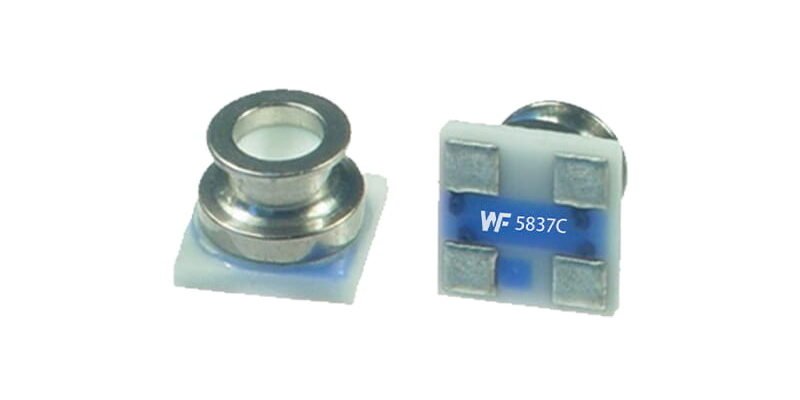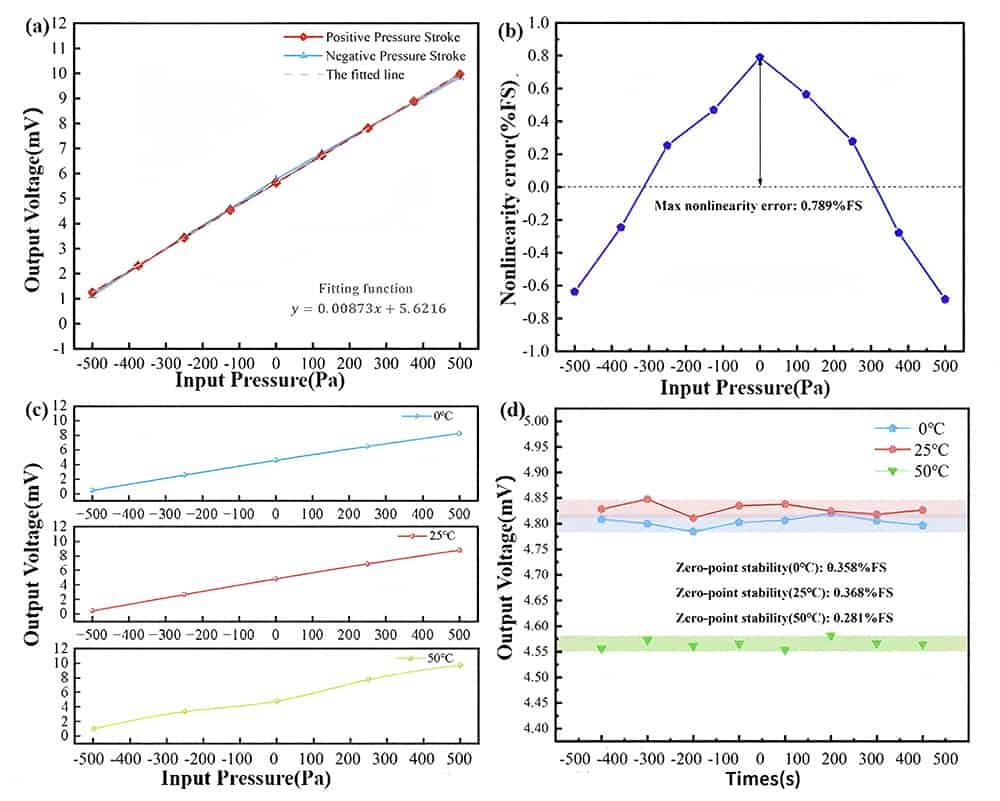Conventional piezoresistive sensors often need external circuits or complex algorithms to correct for temperature changes, which raises power use and system cost. Here we take a structure-driven approach to temperature compensation: local island mass, curved crossed beams and an octagonal curved sensing membrane work together so that electrostatic feedback and mechanical stress redistribution give passive temperature compensation. The aim is to present engineers and decision-makers with a solution that’s manufacturable, integrable and outperforms traditional compensation routes.
Katalog
1. Design and structural innovation
Island-beam-membrane coupling structure
The island-beam-membrane coupling arranges small local “islands” on the sensing membrane and pairs them with curved crossed beams to shape the stress field in a controlled way. As temperature rises the islands produce minute thermal expansions that interact with a designed electrostatic feedback path to partly cancel the membrane’s thermally induced output errors. The octagonal curved sensing membrane increases stress concentration and improves linearity, so the device reaches roughly 10 mV/FS on a 5 V supply while keeping good mechanical strength and fatigue life.

2. Temperature-self-compensation mechanism and performance data
Passive compensation and key metrics
Passive compensation depends on geometry and elastic coupling: temperature shifts cause relative motion between island and beam, changing the stress distribution and, via the electrostatic feedback route, offsetting zero-point drift. Measured over 0°C to 50°C the zero-point drift is 0.081%FS, full-range drift 0.090%FS, nonlinearity 0.307%FS and repeatability 0.265%FS — industrial-grade performance that avoids extra circuitry, higher power draw or complex algorithms.
3. Process and consistency control
SOI and dual-DRIE for machining precision
We use SOI processing and double-sided deep reactive-ion etching (DRIE) to tightly control island and membrane thicknesses, reaching manufacturing consistency up to 99.78%. This process mix keeps microstructure dimensions stable while cutting residual stress and batch variation, delivering zero-point stability under 0.4% and supporting volume production and reliability validation.
4. Test methods and result analysis
Temperature cycling and output evaluation
Under pressure cycles from −500 Pa to 500 Pa we tested the sensor at different temperatures (0°C, 25°C, 50°C), recording zero-point drift over time and nonlinearity curves. At room temperature the output is highly linear; under temperature changes both zero-point and full-range drift are much better than conventional circuit-based compensation, showing that the structural self-compensation is reliable and stable under dynamic thermal conditions.

5. System integration and engineering considerations
Packaging, interfaces and low-power integration
The photographed part is an SMD package with a metal pressure port and four solder pads for board-mounting. When integrating, pay attention to port sealing, welding stress affecting zero-point, and matching the downstream ADC input range and reference to the ~10 mV/FS scale. Since the structure provides temperature compensation, external temperature-compensation circuitry can be minimised, lowering system power and BOM cost.
Kesimpulan
The island-beam-membrane coupling structure achieves temperature self-compensation, reducing reliance on external circuits or heavy algorithms.
Over 0–50°C performance: zero-point drift 0.081%FS, full-range drift 0.090%FS, nonlinearity 0.307%FS, repeatability 0.265%FS.
SOI + dual-DRIE process yields 99.78% consistency and zero-point stability <0.4%.
Structural self-compensation delivers lower power draw and higher integration, easing use in high-precision applications.
Engineering attention to packaging and electrical matching reduces integration risk and preserves measurement accuracy.
Pengenalan di atas hanya sekilas tentang penerapan teknologi sensor tekanan. Kami akan terus mengeksplorasi berbagai jenis elemen sensor yang digunakan di berbagai produk, cara kerjanya, serta kelebihan dan kekurangannya. Jika Anda ingin mengetahui detail selengkapnya tentang apa yang dibahas di sini, Anda dapat melihat konten terkait nanti di panduan ini. Jika Anda terdesak waktu, Anda juga dapat mengklik di sini untuk mengunduh rincian panduan ini Data PDF Produk Sensor Tekanan Udara.
Untuk informasi lebih lanjut tentang teknologi sensor lainnya, silakan Kunjungi Halaman Sensor Kami.
